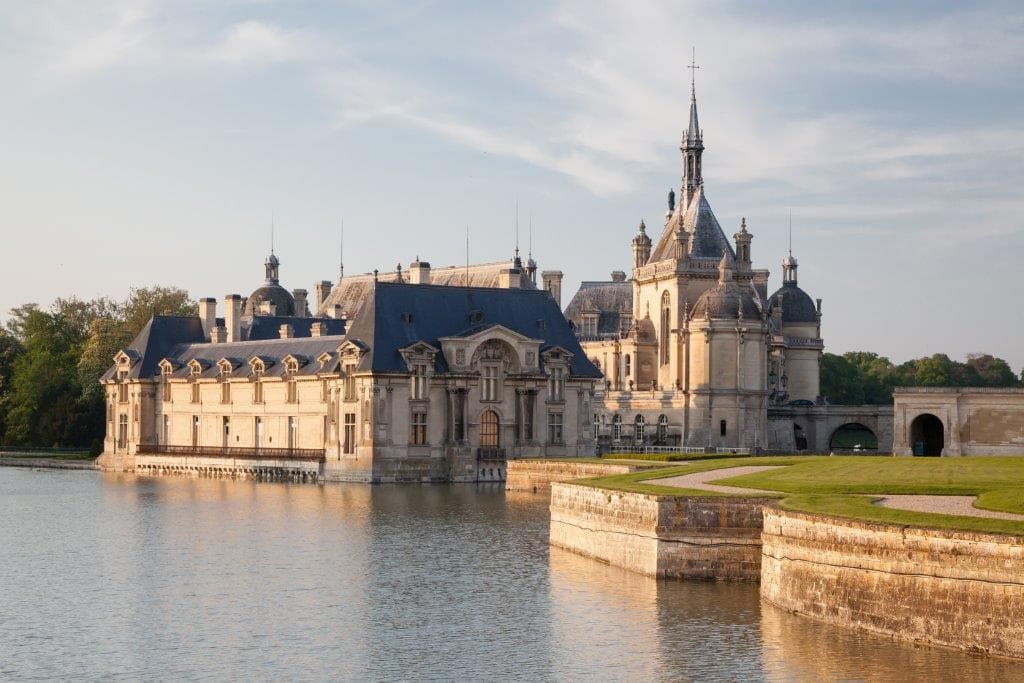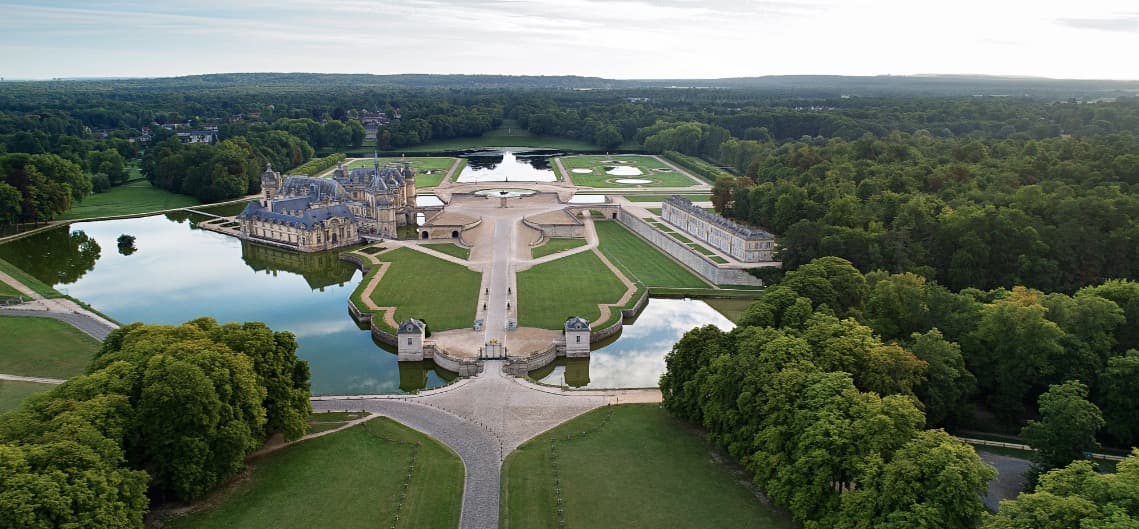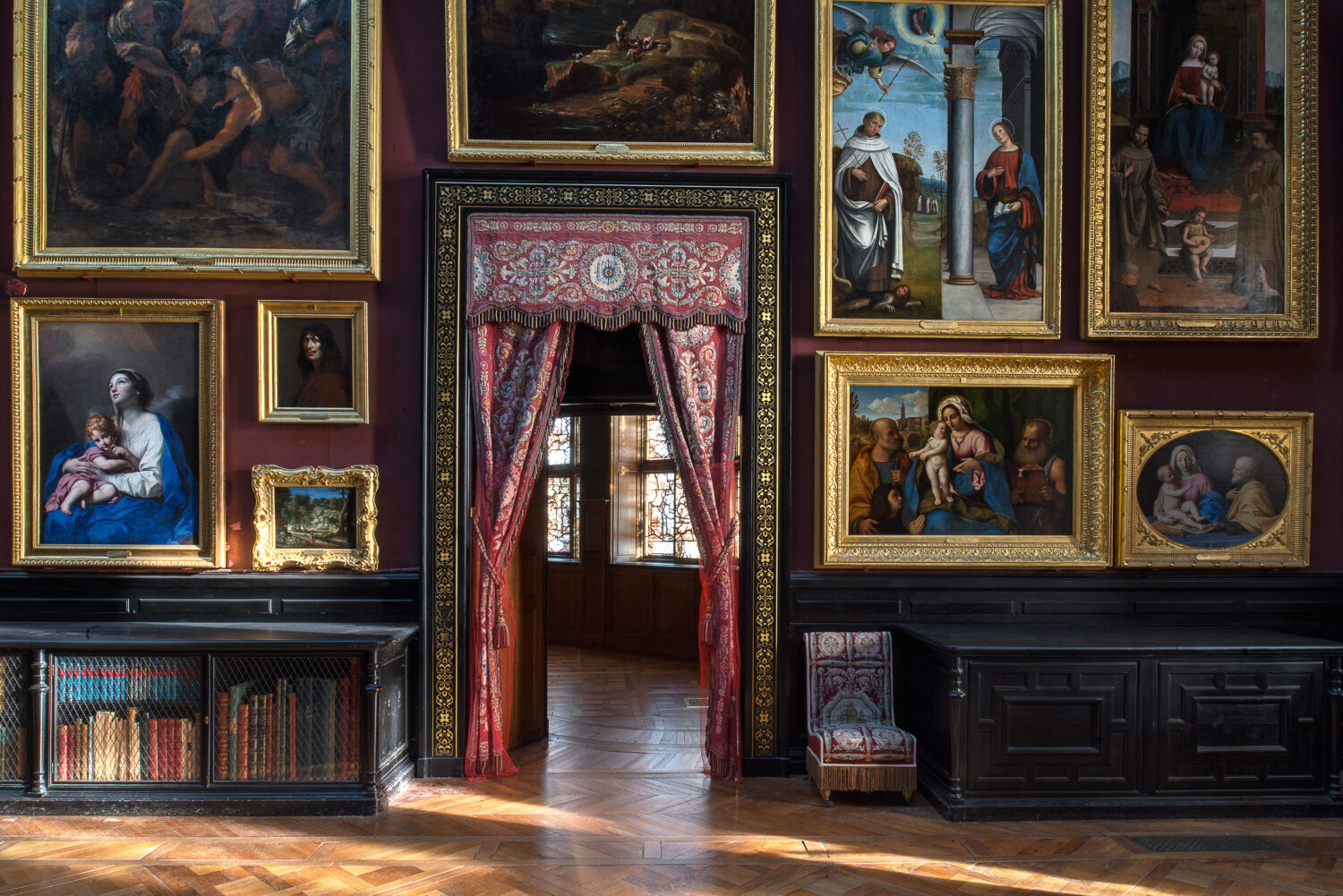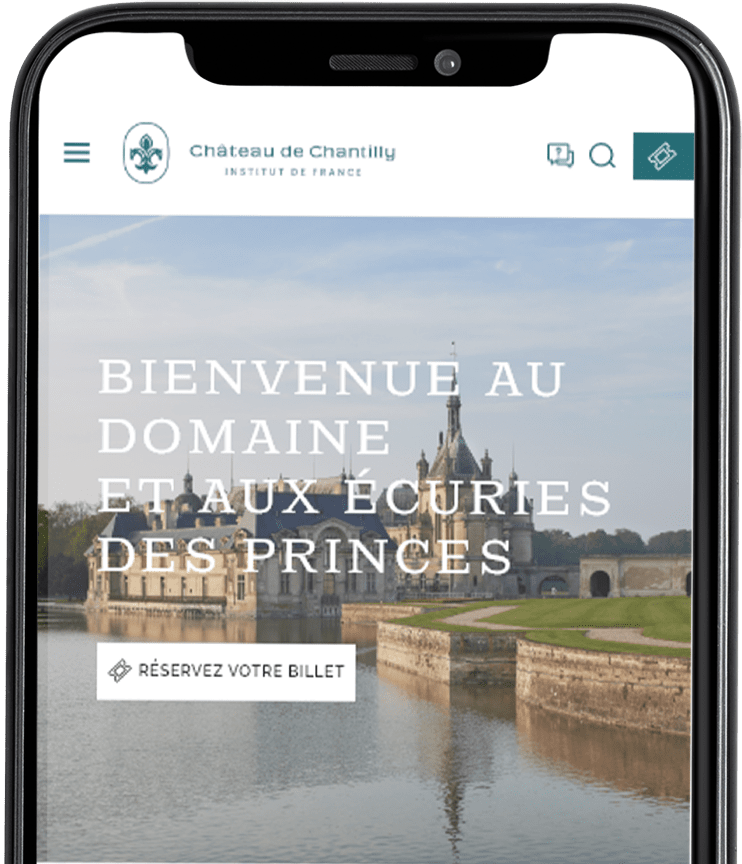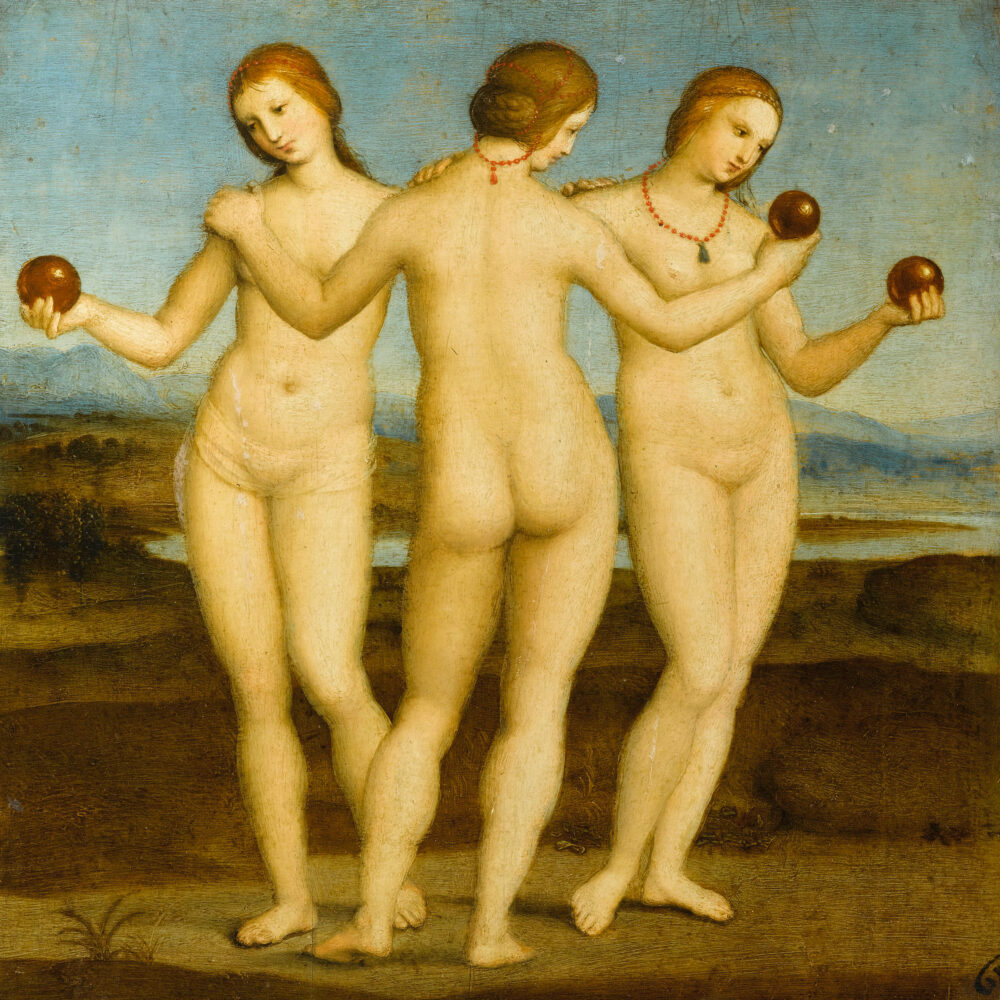
The second largest collection of antique paintings in France after the Louvre
The Duke of Aumale designed the art galleries as a showcase for his exceptional collections. He put together the second largest collection of antique paintings in France, after the Louvre Museum. In keeping with the Duke of Aumale’s wishes, the layout of the paintings remains unchanged since the 19th century, providing a unique possibility to travel back in time and discover the typical museography of the time.
The Gallery of Painting and the Rotunda
The Gallery of Painting is the heart of the Condé Museum. It provides an exceptional example of 19th century museography: paintings are laid out at several levels, frame by frame according to format, with no chronological order. In all, 85 paintings including Poussin’s The Massacre of the Innocents and Philippe de Champaigne’s Portrait of Richelieu are exhibited according to the Duke of Aumale’s personal taste. At the far end of the gallery, masterpieces of the Italian Renaissance are exhibited in the Rotunda, including Portrait of Simonetta Vespucci by Piero di Cosimo and The Madonna of Loreto by Raphael.
Find out more
© Sophie Lloyd
The Santuario
This room, designed as a showcase, presents the masterpieces owned by the Duke of Aumale. It houses 2 works by Raphael: The Three Graces and The Madonna of the House of Orléans, a panel depicting the story of Esther by Filippino Lippi and 40 miniatures by Jean Fouquet for The Hours of Etienne Chevalier.
Find out more
© Gary Otte
The Tribune
Its name and its architecture are reminiscent of the Tribuna in the Uffizi Gallery in Florence. The Duke of Aumale designed this room to present a panorama of art history: two walls are devoted to the Renaissance with Fra Angelico, Botticelli and Titian; one wall is devoted to the French and Dutch schools of the 17th and 18th centuries with Poussin, Van Dyck and Watteau; and two other walls exhibit the works of 19th century France, with the neoclassical movement (Ingres) on one side and romanticism (Delacroix) on the other.
Find out more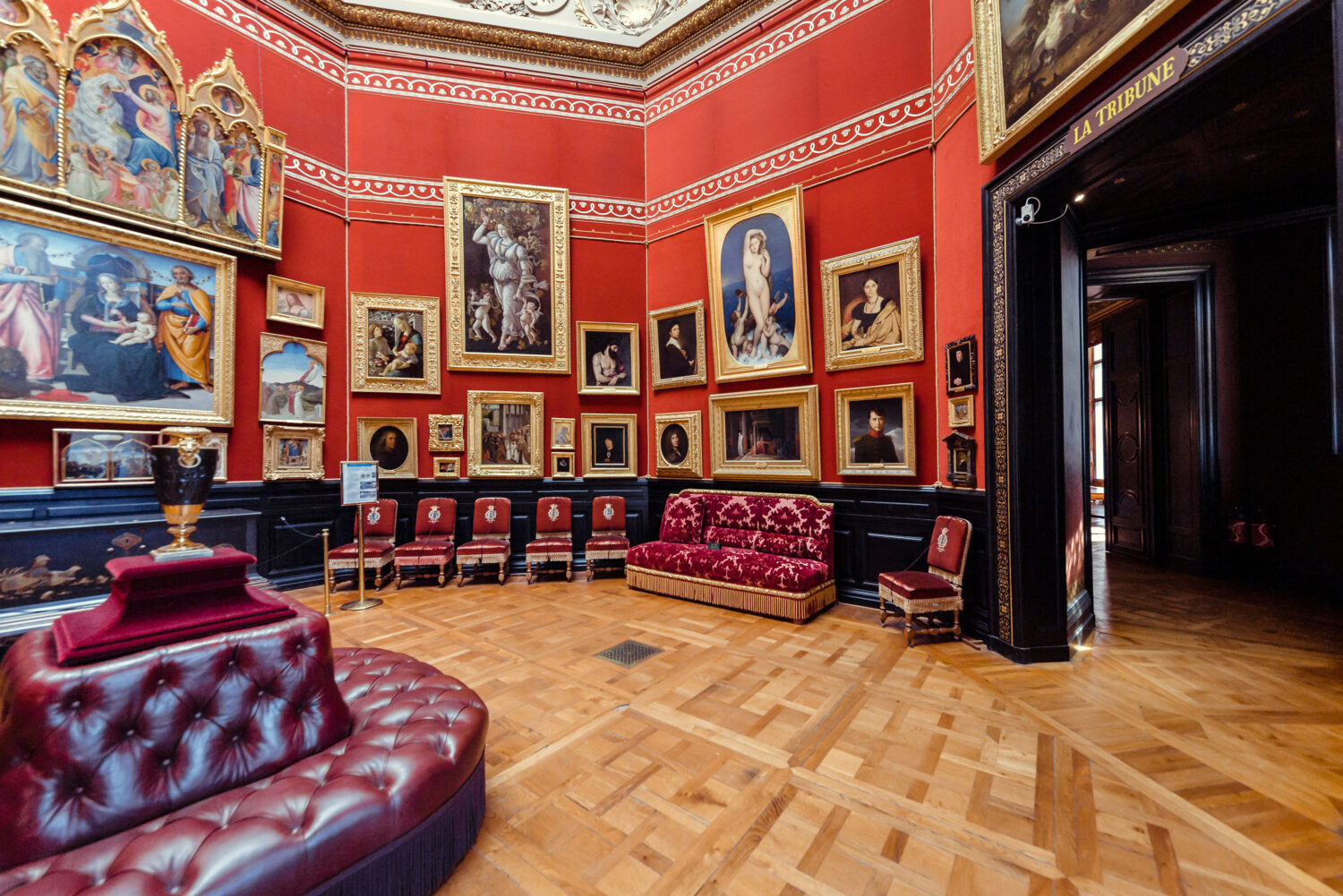
© La Tribune
The Clouet Room
During the 16th century in France, the art of the portrait evolved under the influence of Flemish artists such as Jean Clouet or Corneille de La Haye, known as Corneille de Lyon. The Clouet room houses a collection of 90 Renaissance portraits including all the kings and queens of 16th century France painted by Jean Clouet and his son, François Clouet.
Find out more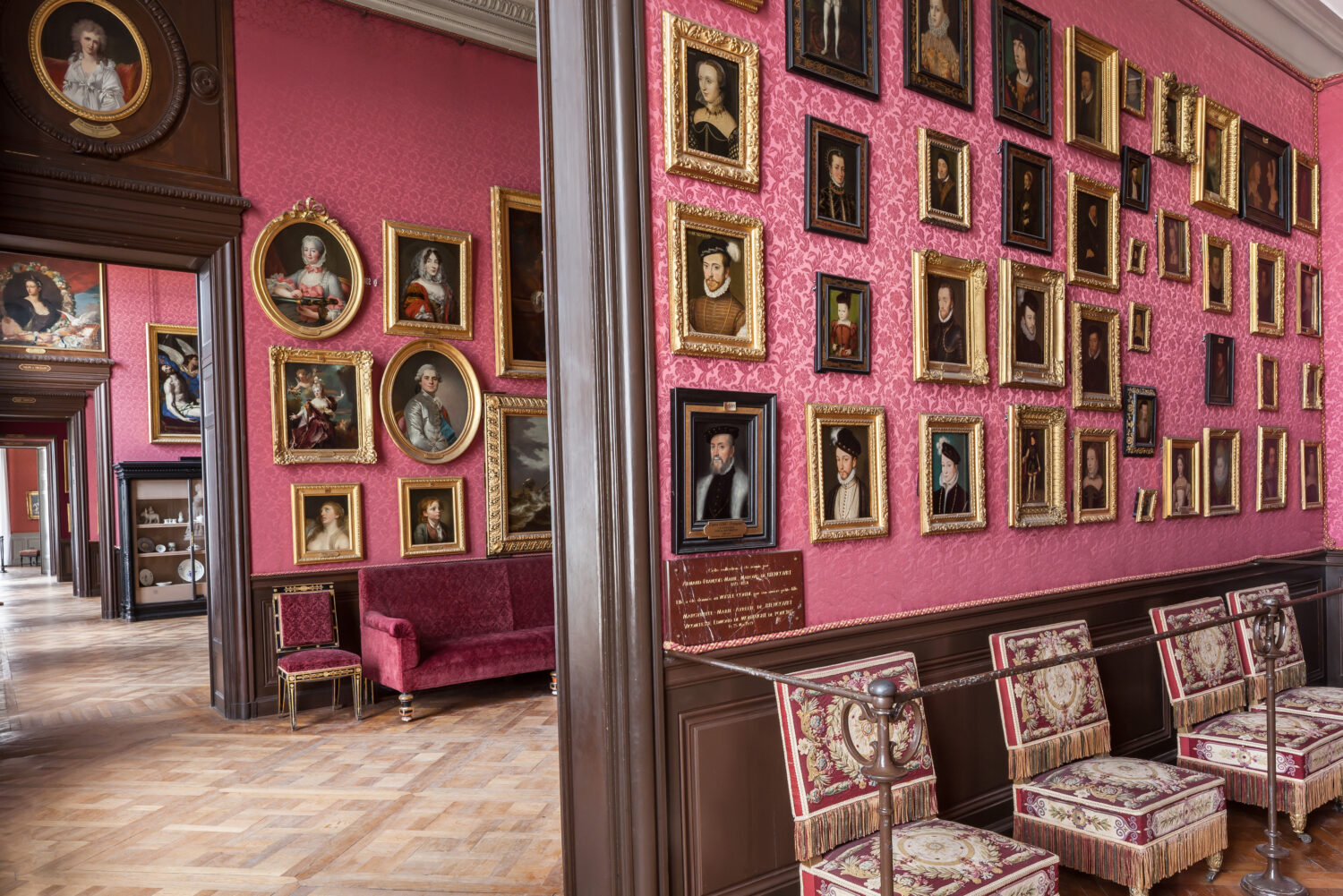
© Sophie Lloyd
The Giotto Room
The Giotto Room houses Italian works from the 14th to the 17th century. The Duke of Aumale had a predilection for Italian painting. This room takes its name from a work depicting The Dormition of the Virgin which, when it was acquired, was thought to be a work by Giotto. It is now attributed to Maso di Banco, who worked with Giotto.
Find out more
© Marc Walter
The Psyche Gallery
The Psyche Gallery features 44 stained glass windows in grisaille depicting the story of Psyche, taken from the Golden Ass of Apuleius. The 44 stained glass windows come from the château d’Écouen, which today houses the National Renaissance Museum. These panels were commissioned by constable Anne de Montmorency for the gallery in his château in Ecouen (1542-1544).
Find out more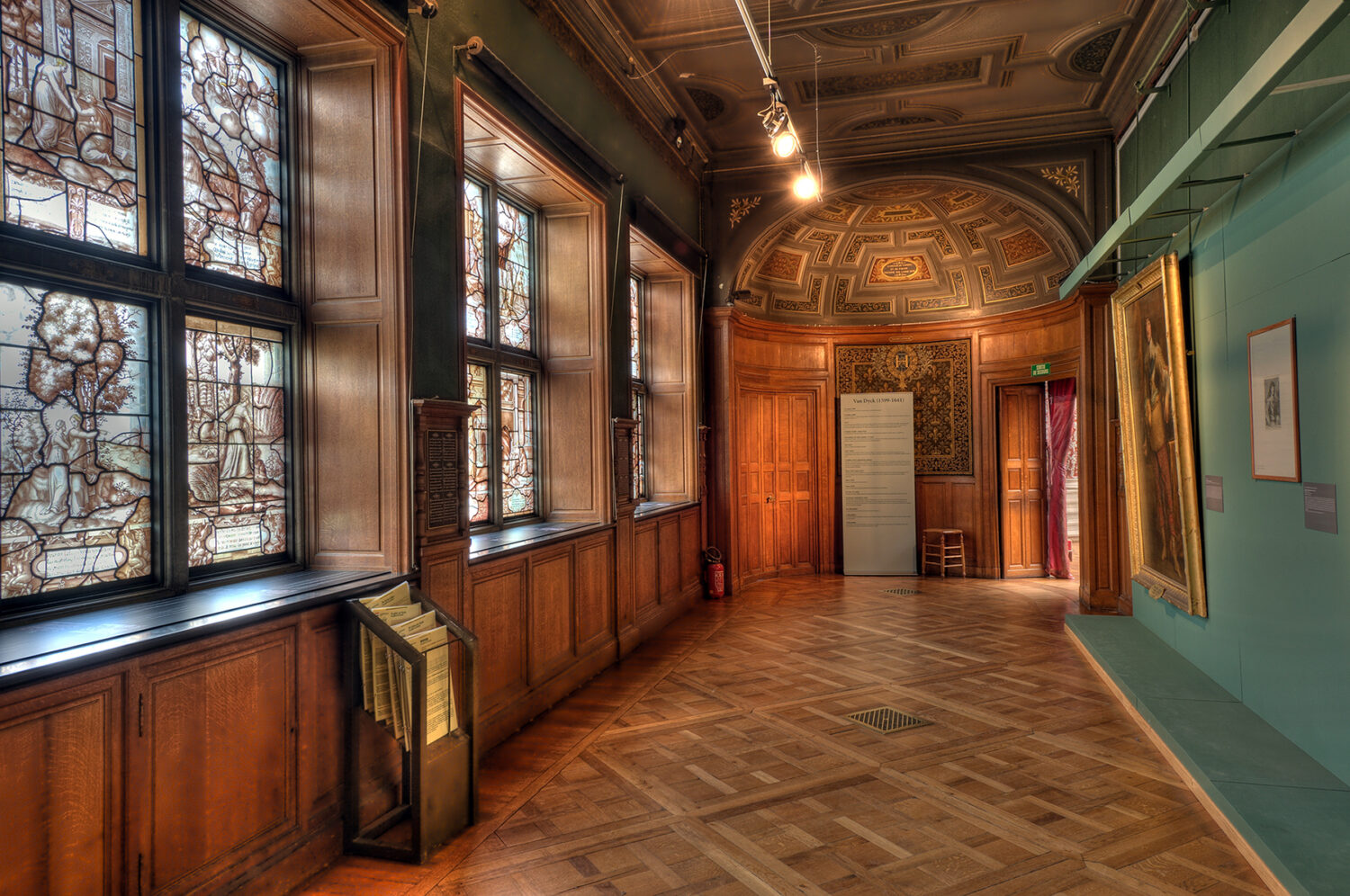
© Normann Szkop
The Stag Gallery
Created at the end of the 19th century, this Renaissance style room, with its coffered ceiling, was used as a reception and dining room. The Duke of Aumale received the artistic and intellectual elite of the period in this room every Sunday. Hunting, the favourite pastime of princes, is omnipresent in the decor. Eight tapestries adorn the walls: they were woven in the 17th century in the Royal Gobelins Manufactory, after a famous 16th century hanging: The Hunts of Maximilian.
Find out more
© Sophie Lloyd

